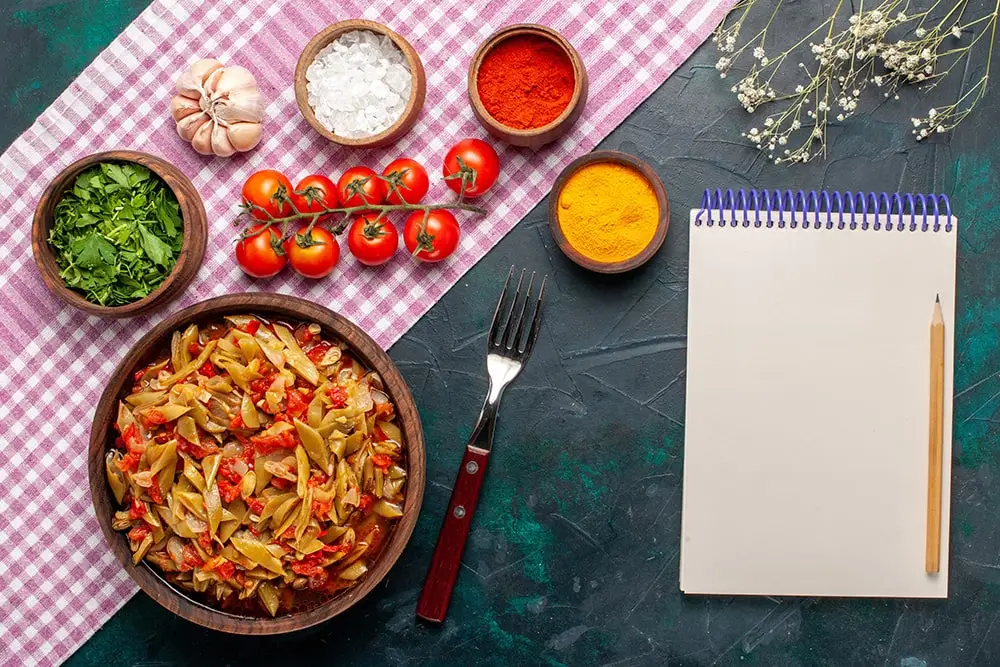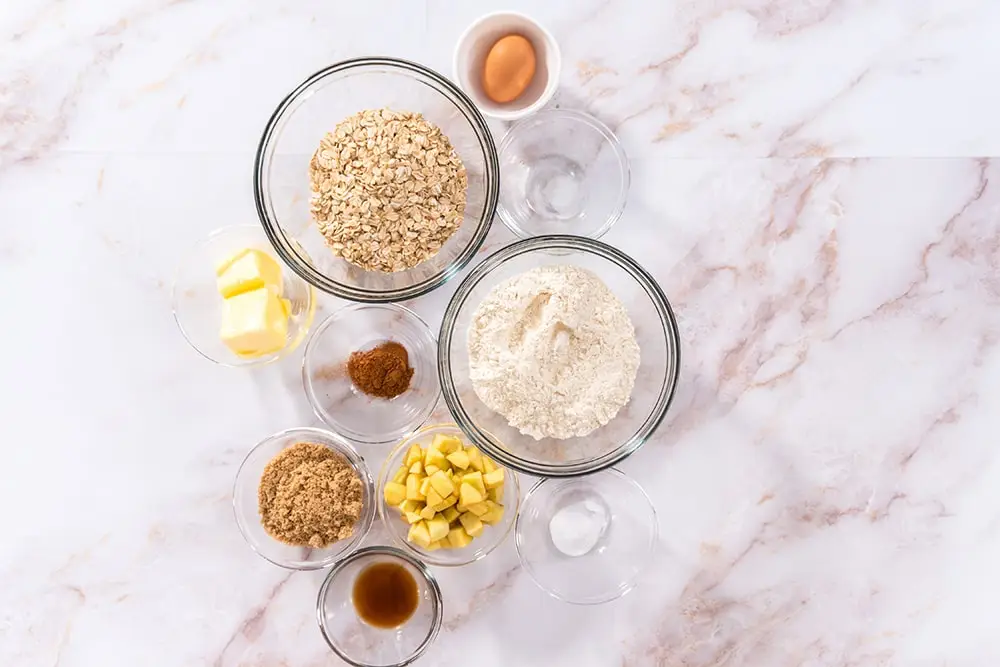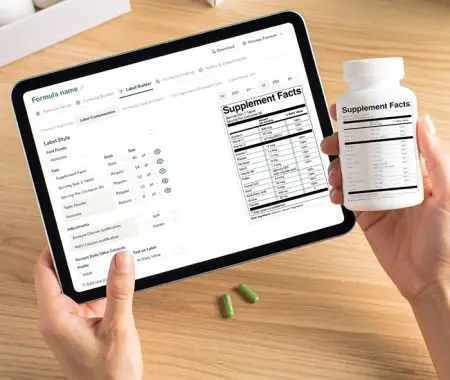
In today’s competitive food industry, accurate recipe costing can greatly impact your business’s profitability. Maximizing the affordability of your recipes can help identify cost-saving opportunities and improve profit margins across your entire operation. Recipe costing software is slowly being introduced as a way to track, analyze, and optimize food costs and menu pricing.
Traditional manual methods in the past have led to calculation errors, inconsistent pricing, and missed opportunities for cost optimization. Modern digital food costing software offered by companies like Food Label Maker is transforming this landscape by providing real-time cost tracking, automated calculations, and precise profit analysis. This article will explore how recipe costing software can benefit your food business operations, from optimizing fundamental ingredient prices to advanced strategies that maximize profit.
Understanding the Fundamentals of Recipe Costing Software
Recipe costing is the foundation of successful food business operations, as it can impact everything from menu pricing for holiday seasons to long-term sales profitability. When calculating the true cost of your recipes, several key factors come into play beyond just the price of ingredients. Understanding these components helps ensure accurate pricing and happier customers in return.
Ingredient Cost Analysis

Costing your recipes begins with listing and precisely measuring your food product’s individual ingredients and the cost of each. The quality and type of ingredients you choose directly impact both your costs and your final product’s appeal. Premium ingredients often command higher prices but can differentiate your product in the market. The key is finding the sweet spot between quality and cost-effectiveness.
Several factors affect ingredient costs:
- Selection and Quality: Higher-quality ingredients typically cost more but may yield better product results in terms of flavour or taste, and might require less waste.
- Preparation Requirements: Some ingredients like premium meats or whole vegetables need extensive prep work, increasing labor costs and time.
- Storage Needs: Ingredients requiring refrigeration or special storage conditions add to overhead costs.
- Seasonal Availability: Prices can fluctuate based on what fruit or vegetable is grown during certain seasons and market availability.
- Waste Potential: Some ingredients have higher waste factors due to trimming, spoilage, or evaporation properties during preparation. These yield percentages are often missed and must be considered in final cost calculations.
- Bulk Purchasing Options: Buying in larger quantities often reduces per-unit costs but requires adequate storage and inventory management.
Smart ingredient choices and management can significantly improve your product line without compromising quality. For example, choosing local seasonal produce can often provide better value than imported alternatives, while supporting local suppliers and reducing transportation costs.
Labor Cost Calculations
Labor costs make up a large portion of your recipe expenses as many steps of food production require staff time. If you own a restaurant or a food service business, you need to staff to prepare ingredients, cook the food, package or serve it, and clean up. Understanding these costs helps you price your products accurately and even helps you identify areas where efficiency can be improved.
You should also consider the skill level of your staff when calculating labor costs as experienced workers may have higher wages but they often work more efficiently and produce less food waste. This balance between skill and cost efficiency is crucial for maintaining quality while trying to cut down on expenses. Effective training programs can help less experienced staff become more efficient over time.
While the initial investment in automated systems and management software might be substantial, it can lead to significant labor savings and more consistent product quality in the long run. Food costing software can help with everything from ingredient measuring to packaging, reducing human error and increasing your production speed.
Overhead Considerations
Every food business has two types of overhead costs: fixed and variable costs. Fixed costs are recurring costs that stay the same regardless of how much you produce, like rent or equipment leases. Variable costs, on the other hand, change with production levels and encompass elements like utilities and cleaning supplies.
Understanding both helps you calculate accurate recipe costs and set appropriate prices as utilities and seasonal cost variations all affect the way your products are produced. For example, baking businesses might see higher electricity costs in summer due to recipes needing to be kept cooler, while winter brings higher heating expenses. Regular equipment maintenance is another cost to consider, as it might seem like an unnecessary expense, but an appliance breaking down or stalling can affect your production levels, output speed, and the quality of the final product.
Packaging Expenses

Your packaging choices do more than just protect your product when transported, they also act as a way to communicate your brand to customers. Many companies use basic packages like glass jars or cardboard boxes for their products, and while they might be more affordable, premium or sustainable packaging options could attract more eco-conscious customers and justify higher prices. It is best to consider how your packaging decisions affect both your costs and your market position.
Bulk purchasing strategies can be implemented to reduce per-unit packaging costs, but must be balanced against storage requirements and minimum order quantities. Storage and handling costs include factors like space requirements and potential waste from damaged materials. Implementing waste reduction strategies for packaging might add more to overall costs but it supports sustainability goals and places your product in a more favorable light for your customers.
Benefits of Food Costing Software For Business Operations
Food costing software is transforming how companies operate in today’s competitive market. While traditional manual methods can lead to pricing inconsistencies and missed opportunities, modern recipe costing software gives you real-time insights into your costs and profitability. This allows a business in any industry to make more informed decisions about menu items, production processes, and pricing strategies.
Restaurant and Cafe Benefits
For restaurants and cafes, recipe costing software can transform your daily operations. The software allows you to instantly see which dishes generate the most profit and which ones might need adjustments to their pricing structure or ingredients. This real-time tracking is especially valuable for daily specials or for pricing menu items on the fly, where you need to make quick decisions based on ingredient availability and cost changes.
The software also helps you manage fresh ingredients and inventory more effectively, further reducing waste and improving your cash flow. When you understand exactly how much time and resources each dish requires, you can optimize your labor costs during busy periods. For a restaurant offering delivery and takeout, the software ensures your pricing accurately reflects additional variable costs like packaging and delivery expenses.
Food Manufacturing Benefits
Food manufacturers face a number of challenges when scaling all their recipes for large batches. Recipe costing software helps you maintain consistent quality across multiple production facilities and allows you to accurately scale ingredients. The software is automatically updated with the latest compliance standards, making it easier to meet regulatory requirements and make strategic decisions without administrative burdens or facing penalties.
Managing bulk ingredients also becomes more straightforward with proper costing software. You can optimize purchasing decisions and forecast storage solutions based on ingredient usage and purchasing data. The software also provides clear insights into packaging costs and how that will affect profit, helping you find cost-effective solutions that maintain your product’s quality and presentation.
Bakery-Specific Advantages
For bakeries, precise measurement of ingredient yields is crucial, especially when working with expensive individual ingredients like nuts, chocolate, or specialty flours. Food costing software helps you adjust your menu costs based on seasonal ingredient availability and price changes so you maintain profitable margins year-round.
The software makes scheduling production more efficient by showing exactly how much time and resources each product requires. This is important for freshly baked goods that have a set shelf life. You can concentrate on effective menu engineering and inventory control with costing software at your disposal, allowing customers to experience the best quality product.
Catering Service Improvements
Catering businesses need to manage varying event sizes and custom menus. Recipe costing software helps you provide accurate quotes while meeting your desired profit targets, regardless of event size or menu complexity. The system makes it easier to manage flexible labor costs, which is essential when you need to scale your workforce for different events.
The software also helps track transport and setup costs accurately by ensuring all variable and fixed expenses are included in your pricing. You can even make better decisions about equipment purchases versus rentals based on actual usage patterns and costs, further helping optimize your capital expenditure.
See How FoodLabelMaker Can Help You
Implementation Best Practices
Implementing recipe costing software into your operations requires careful planning and consideration of your business’s unique needs. When implemented correctly, the software becomes an invaluable tool for managing costs and improving profitability across your operation.
Setting Up Your System
The first step in implementing recipe costing software is ensuring it works seamlessly with your existing systems. The software should integrate with your current inventory management system, making it easy to track ingredients and costs across all aspects of your business. Staff training is essential as your team needs to understand how to use the system effectively to get the most value from it.
Your data needs to be standardized across all locations to ensure consistent costing. This means establishing clear and accurate protocols for measuring ingredients, recording waste, and updating costs. Regular monitoring helps identify any issues early so you to make adjustments as needed to maintain accurate costing throughout the product lifecycle.
Best Practices for Ongoing Management
Successful recipe costing requires regular attention to detail. Review your costs frequently, especially for key ingredients that might experience price fluctuations. Building strong relationships with suppliers can also help you negotiate better prices and ensure reliable delivery of quality ingredients.
Quality control procedures should be standardized and documented to maintain consistency in your product. Regular yield monitoring helps identify where waste might be occurring, while portion control standards ensure your actual food costs match your calculations when planning a new menu.
Maximizing ROI with Food Label Maker’s Recipe Costing Software
Food Label Maker’s recipe costing software streamlines your food production processes through:
- Automated cost calculations and customizable price updates
- Comprehensive cost management in one centralized platform
- Accurate pricing maintenance across your entire menu or product line
- Built-in profit margin optimization tools
The key features they provide are:
- Cost Management Dashboards:
- Detailed ingredient cost tracking
- Packaging cost calculations
- Labor cost calculations
- Overhead expense calculations
- User-Friendly Interface:
- Easy-to-navigate ‘Cost’ tab on your personal dashboard
- An extensive ingredient database of over 10,000 ingredients
- Flexible cost editing options
- A visual breakdown of recipe costs
- Automated gross profit projections
- Integration Capabilities:
- Seamless inventory management system integration
- Multi-location cost tracking
- Instant batch size adjustments
- Ingredient substitution analysis
Additional benefits include in-depth nutritional analysis of all your ingredients, and automatic allergen detection. Their platform also allows you to download these in-depth cost reports so you can review and analyze every aspect of your recipe costs. By centralizing these features in one platform, Food Label Maker helps you maintain profitability while ensuring product quality and meeting customer expectations.
Conclusion
As the food industry continues to evolve, the role of technology in cost management becomes increasingly crucial. Businesses that adopt comprehensive recipe costing software gain a significant competitive advantage through better cost control, waste reduction, and operational efficiency. The return on investment extends beyond direct cost savings to include improved product consistency, better regulatory compliance, and increased customer satisfaction. Food Label Maker’s recipe costing software provides the tools you need to track costs effectively, optimize your recipes, and make informed business decisions. By implementing proper recipe costing practices and utilizing modern software solutions, you can ensure your food business remains profitable while meeting customer expectations for long-term quality and value.



